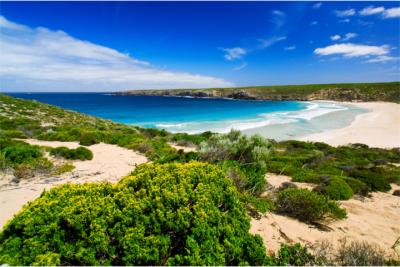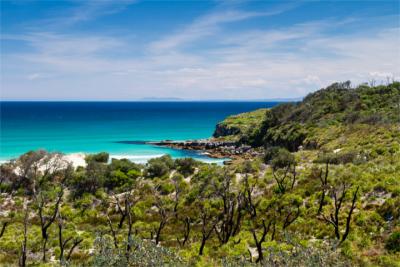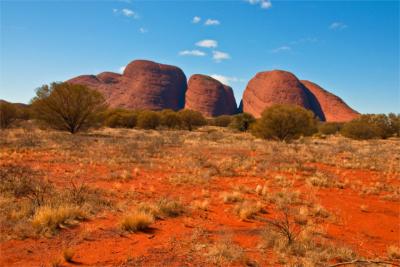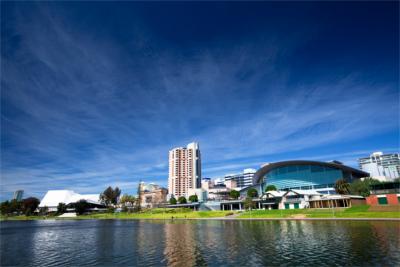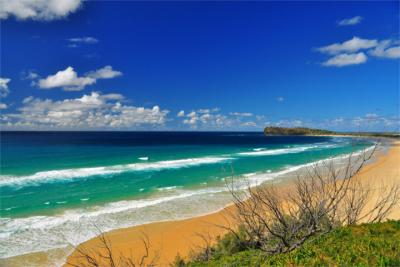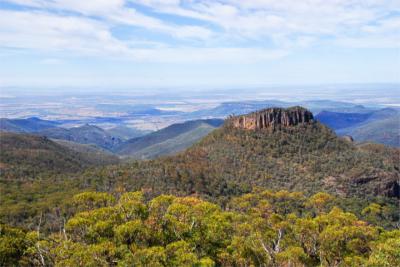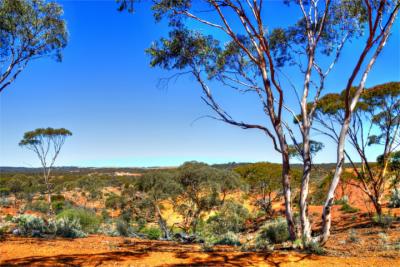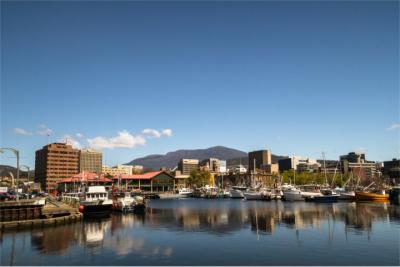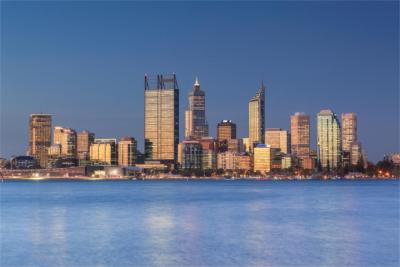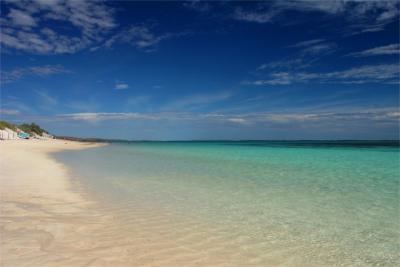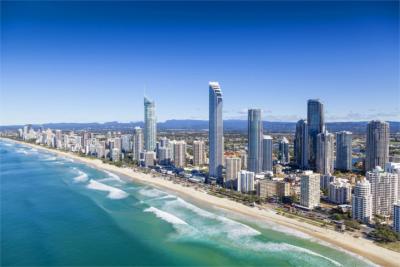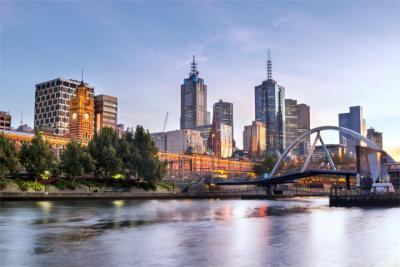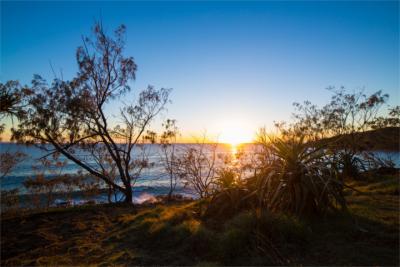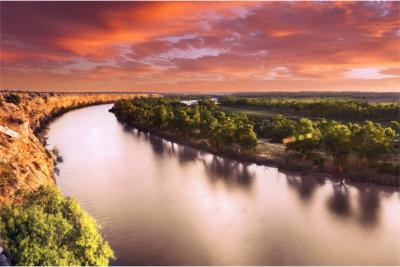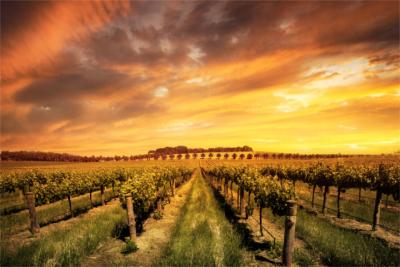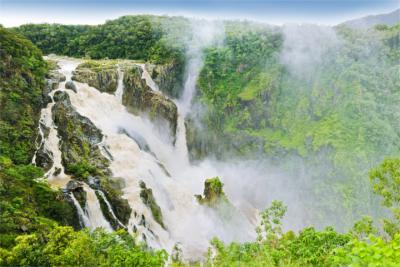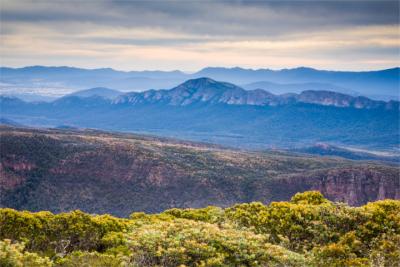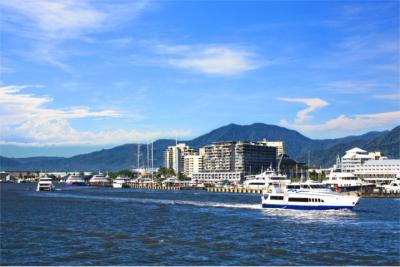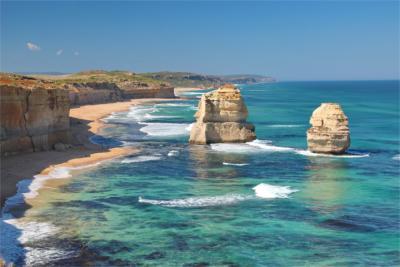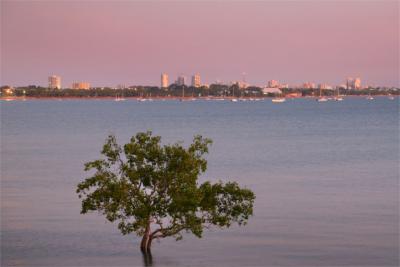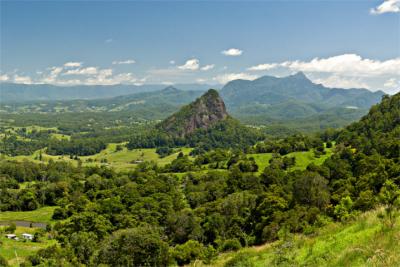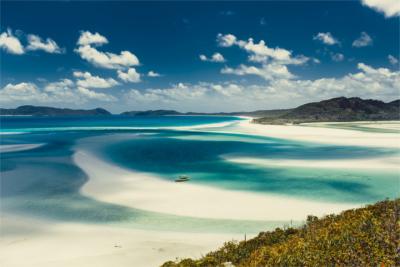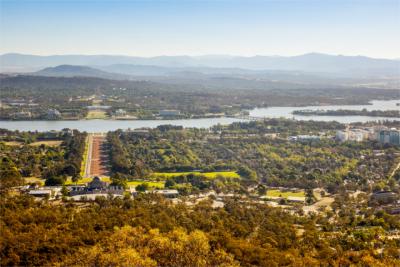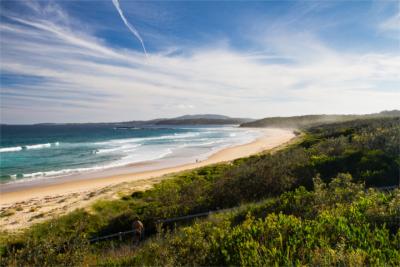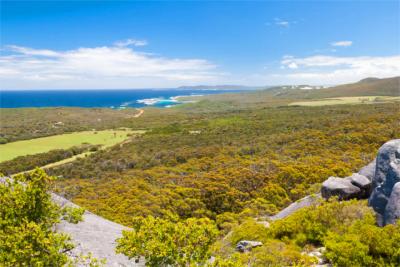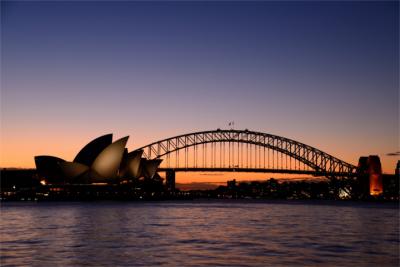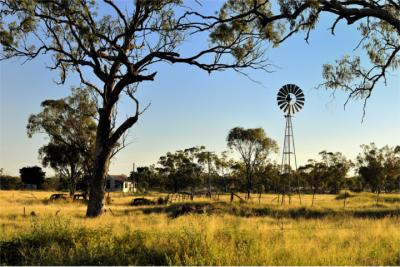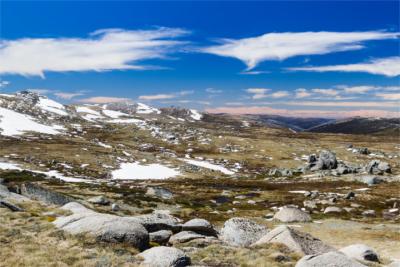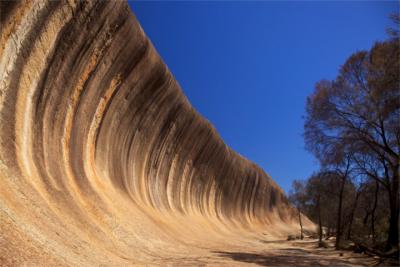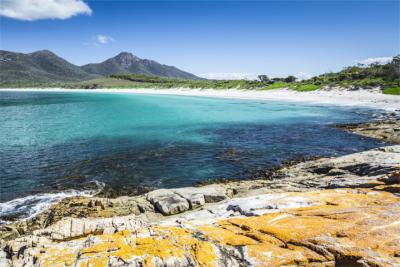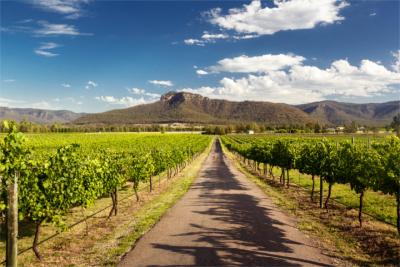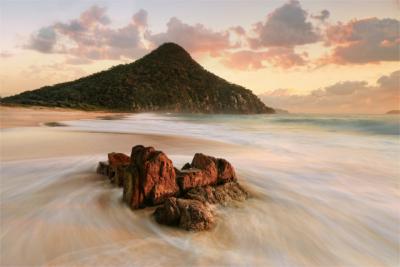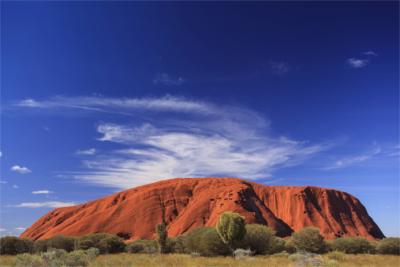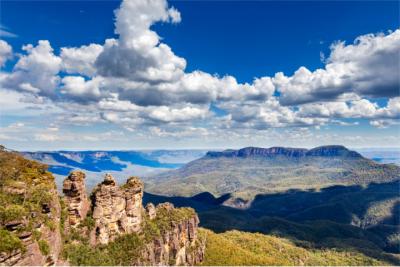Travel Offers
Travelmyne Featureprint
Distance
Red Centre - The Red Heart of Australia
The Red Centre is known for its vast red desert landscapes, impressive mountain ranges as well as unique granite and sandstone rocks such as the famous Ayers Rock. Together with the culture of the aborigines, a trip to the Red Centre is the perfect outback adventure.
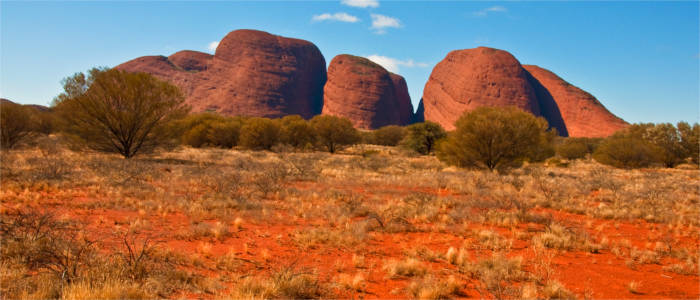
Geography - The red semi-desert in Central Australia
The Red Centre is a semi-desert in the centre of Australia in the outback of the Northern Territory. It has an area of almost one million km² and accommodates the most significant landmark of the Australian continent, the inselberg Uluru or Ayers Rock (350 m). Other natural wonders and popular destinations are the rock formation of the Kata Tjuta, the MacDonnel Ranges and the King Canyon. The central location and starting point for many expeditions is the town of Alice Springs. The dry climate in the Red Centre is accompanied by hot temperatures and low humidity throughout the year. In winter, temperatures can sink to freezing point at night.
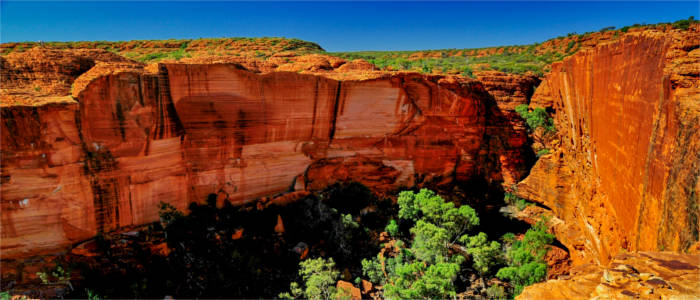
Nature - Numerous tufts of grass, dry soil and impressive granite rocks
The typical landscape in Central Australia is characterised by great sand dunes, vast plains, deep gorges and impressive rocks. The read soil in the region is relatively dry and low in nutrients. Nevertheless, it is vegetated by small shrubs and trees, a few flowers and numerous tufts of grass. Some stretches of land are completely covered in the true grasses of the Spinifex. The semi-desert's fauna consists of kangaroos, emus, birds of prey and reptiles like the thorny devil. You can watch these animals in the Alice Springs Desert Park, for example. Another part of the local (but not native) fauna are the camels. The hoofed animals were imported as working animals by the British in the 19th century and reproduce plentifully because they have no natural enemies on the continent. Unique freaks of nature in the Red Centre are the Uluru and the Kata Tjuta, the Kings Canyon, the MacDonnell Ranges and the granite rocks of the Devil's Marbles (Karlu Karlu). The Uluru-Kata Tjuta National Park, the Uluru (Ayers Rock) and the rock formation of the Kata Tjuta (Mount Olga) have been part of the UNESCO World Natural Heritage since 1994. The Kings Canyon in the Watarrka National Park impresses with harsh, red walls of rock, deep gorges and cliffs as well as with clefts which are overgrown with palms. Several waterholes cause relatively high humidity and a distinct fauna and flora in the deep abysses and the otherwise dry nature of the Red Centre.
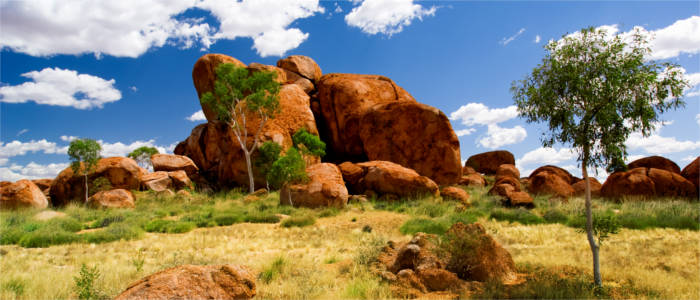
Culture - The sanctuaries of the aborigines
The Red Centre was already settled by Australia's native inhabitants thousands of years ago. They still maintain their traditions and customs in reserves which were built for them, including protected sights and sanctuaries, which are of great importance to the aborigines and their faith. Trespassing is strictly forbidden and may be punished with high fines. However, there are a few sites which are open to the public and can be explored, for example on a guided tour. The Ayers Rock, called "Uluru" in the language of the Anangus, is over 500 million years old and due to its unique cultural significance, it is part of both the World Natural Heritage and the World Cultural Heritage of the UNESCO. There are several legends of the rock, which is three kilometres long, two kilometres wide and crossed by furrows, which try to explain its present-day shape (the Uluru myths), for example. Several caves at the Ayers Rock accommodate rock paintings which tell of these and other myths. Other famous sacred places of Australia's native inhabitants are the rock formation of Devil's Marbles (Karlu Karlu) and Mount Olga (Kata Tjuta, meaning "many heads"). Like the Ayers Rock, they are part of the aborigines' history of creation and therefore important spiritual and ceremonial places.
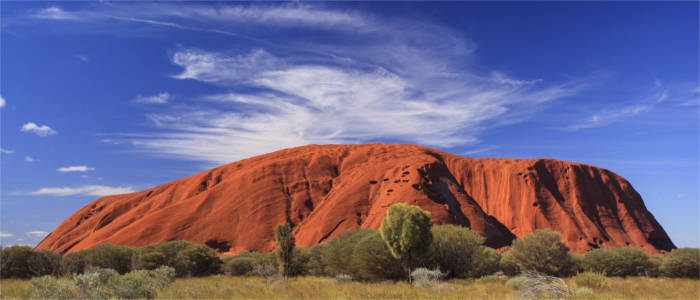
Experience - Experiencing the magic of the outback on a camel ride
The Red Centre and its unique, harsh landscape can be explored in many ways. During a flight with a hot-air balloon, a helicopter ride, a tour with a cross-country vehicle or a camel ride, travellers experience the magic of the desert-like Red Centre at first hand. Many visitors consider the spectacular play of colours on the granite rocks, especially on the Uluru, at sunrise and sunset, a particularly impressive experience. Depending on the altitude of the sun, the cloud conditions and the lighting, the sacred mountain assumes a brown, orange or bright red colour. A popular starting point for expeditions is the town of Alice Springs. It has an area of 148 km² and is considered the gateway to an adventure into the red heart of Australia. Cafes, bars, restaurants and shops with names like "aboriginal", "outback" or "bush", reptile exhibitions and markets (Todd Mall Market) with art objects and articles of daily use made by the aborigines invite holidaymakers to spend money and put travellers in the right mood for a trip into the Australian outback.
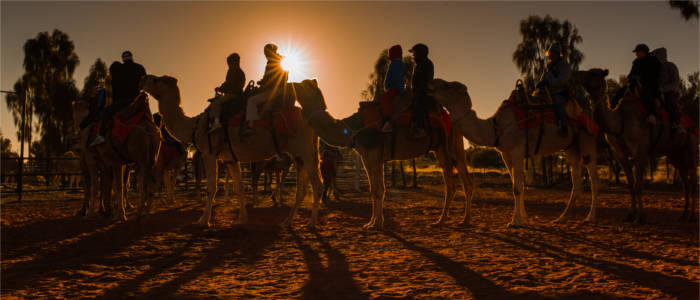
Activities - Outback adventures
Cycling and motorcycling tours on the Red Centre Way and hikes in the natural landscape are popular ways of exploring the Australian outback. The Kings Canyon in the Watarrka National Park and the Uluru in the Uluru-Kata Tjuta National Park are excellent hiking destinations. During a hike along the Kings Canyon Rim Walk or the Kings Creek Walk, you see impressive gorges, refreshing waterholes like the Garden of Eden and unique rock formations such as the Lost City. The Liru Walk, the Uluru Base Walk and the Mala Walk go along the famous Ayers Rock. The Uluru Climb, which is 1.6 kilometres long, leads up to the top of the inselberg. This path, however, is a little dangerous and the aborigines do not like to see tourists climb their sacred site.

Information
The best time for travelling the Red Centre are autumn and spring. Warmer days, cooler nights and little temperature fluctuations are common during these seasons. The summer months (December to February), on the other hand, can be very hot, which is why hikes can become very demanding during this time. Holidaymakers who want to experience the region in summer should definitely bring a hat and sun protection. Travellers usually arrive at the airport in Alice Springs but only national flights arrive here. Tourists from abroad can arrive at the airport in Darwin. From there, you can continue your journey by plane, train, bus or in a rental car. The distance between Darwin and Alice Springs is 1,498 km.
The Red Centre is an extraordinary travel destination for active holidaymakers and culture enthusiasts. Camel rides, hikes and motorcycle tours through the red desert landscape constitute a unique outback adventure, while the impressive cultural and natural monuments in the region take you into the culture of the aborigines.

